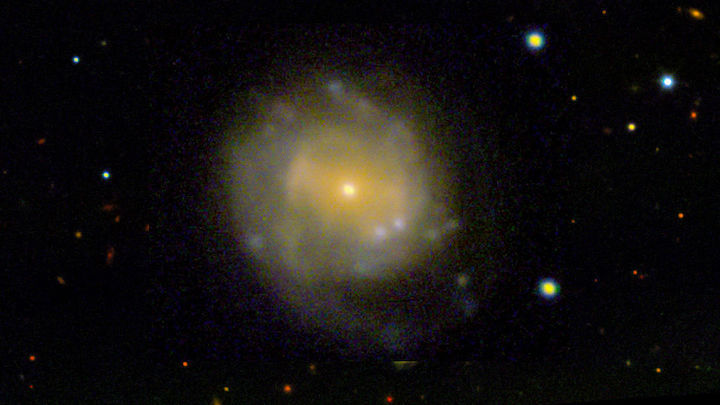22.07.2021

When a massive star reaches the end of its life, it can explode as a supernova, leaving behind a dense remnant in the form of a neutron star or black hole. We typically can’t see these objects because supernovae tend to occur in distant galaxies, making their remnants hard to spot. But astronomers now say they’ve seen one inside a rare failed stellar explosion.
The result hasn’t yet been peer reviewed. If the finding is correct, it would be “one of the very first times we’ve seen direct evidence for a star collapsing and forming one of these compact objects,” says Anna Ho, an astrophysicist at the University of California, Berkeley, who was not involved in the work.
In 2018, astronomers spotted a new type of stellar explosion inside a comparatively close galaxy, 200 million light-years away. Dubbed AT2018cow, but informally known as “the Cow,” the event was both much brighter and faster—reaching its peak brightness in just days before dimming 3 weeks later—than a regular supernova, defying explanation. Scientists’ best guess for the cause of the bright blip, known as a fast blue optical transient (FBOT), was that the interior of a star collapsed to become a neutron star or black hole before a true supernova could form. The result was a “central engine”—a rapidly spinning object inside the outer layers of the star. Scientists think powerful jets of matter coming from the neutron star or black hole burst through the outer shells of material, making the object appear extremely bright.
Now, in a preprint on the server Research Square, scientists report spotting such an object inside the Cow. Using a telescope on the International Space Station called the Neutron Star Interior Composition Explorer, the scientists observed x-ray light emitted by the Cow for 60 days following the explosion. After precisely timing the arrival of the photons, they calculated that the object producing the light was spinning once every 4.4 milliseconds.
“This rapid periodicity is hinting that the x-ray source is compact and small,” says Brian Metzger, an astrophysicist at Columbia University and a co-author on the study. Because the rotation stayed constant at 4.4 milliseconds, even after billions of observed spins, a black hole explanation is more likely than a neutron star, he adds, because a neutron star’s rotation speed would be expected to decrease over time.
Daniel Perley, an astrophysicist at Liverpool John Moores University, calls the finding “very exciting.” If correct, it would rule out other possible explanations for the Cow, including the idea that its light comes from a larger, intermediate-mass black hole devouring a star. “Whatever is producing these x-rays must be extremely compact, on the scale of kilometers, which essentially rules out a large black hole and points strongly in favor of the central engine models,” he says.
Three events similar to the Cow have been spotted since 2018, most recently “the Camel” in 2020, but none is as close or bright as the Cow, making comparison difficult. Metzger calls the Cow a “Rosetta Stone event” that could be useful in interpreting more of these failed supernovae. “It’s a nearby event that we can hope to understand,” he says. “And if this is telling us this is a black hole, then every time we see an FBOT in the distant universe, we will know that was a black hole that formed.”
Quelle: AAAS
